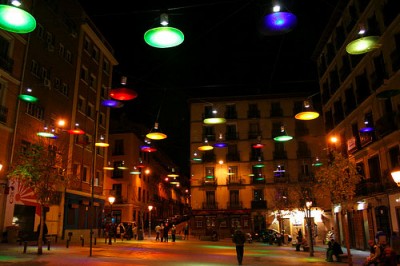How do you know you’re in a natural cultural district?

…that is, unlike an unnatural one where most of the buildings are large-scale – designed, funded and run by city governments and corporations… and feel that way?
Continuing a look at the research of professor Mark Stern, profiled in the previous entry, natural cultural districts:
– rely on self-organized local players, organized from the bottom-up;
– are cultivated, as in economic gardening (a few examples listed here), not master-planned (this is where cities usually stop paying attention);
– measure cultural participation by attendance at neighborhood, active, informal events (ie happy hours, dance classes), not formal events (regional arts performances);
– recognize art in everyday items (like the designer lines in Target, but local) vs grand displays of public art or public displays of individual art;
– embrace a diversity of genres – classical music and reggae, ballet and break-dancing, not either or;
– enjoy higher cultural participation rates – an Urban Institute study suggests 20% higher participation with a wider range of activities to choose from;
– attract creative engagement most commonly via informal social settings (house parties, nightclubs, small concerts), based on surveys;
– have significantly more commercial cultural firms (music stores, arts and crafts galleries, dance schools) than nonprofit cultural providers, whereas it’s often expected to be just the opposite;
– are principally supported by the creatives themselves, especially social entrepreneurs like street musicians, amateur choirs, theater groups, and emerging organizations;
– and of course, emphasize popular local, independent businesses.
Image source: Chueca, Madrid, Spain by CiniK

Leave a Reply